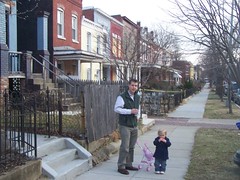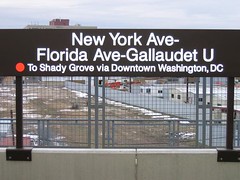Fixing urban "slums"
with the case of Downtown Eastside in Vancouver, BC as the primary example, is the subject of a series in the Toronto Globe & Mail. This article, "Troubled residents can teach us a thing or two," has links to the other articles in the series.
I'd say the major point in today's story is that the issue isn't money so much as it is a deep, connected analysis, and a long term perspective.
(I jokingly refer to my involvement in urban issues as "blowback" in response to the more than $100 million that was spent on various projects in the H Street neighborhood, projects resulting from the post-1968 riots "H Street Urban Renewal Plan" and the failure of these programs, even the relaunch of Union Station in 1988, to substantively improve the neighborhood. I have spent much of my "thinking time" since 1999-2000 trying to figure out why.)
I am not fully enamored of the thinking that comes across in the article, what I sometimes call "letting 1,000 flowers bloom" (after Mao's Cultural Revolution) and the belief that everyone knows their own situation so well that they can fix it based on their own analysis.
It's a thin line between self-knowledge and parochialism. Plus the typical practitioner generally isn't very good about figuring out broader systems and meta-analysis, about how places function similarly, because the systems are similar, even if the places are not.
One of the best books to read that sheds light on the process, and the "use" and "exchange" value of place is Urban Fortunes: Toward a Political Economy of Place, by Logan and Molotch.
And another good book in terms of focusing on rebuilding and revitalizing lower income communities is the Community Economic Development Handbook by Mihalio Temali, which focuses on microenterprise development and job development, along with commercial district revitalization.
Also see "Is this the fifth phase of center city revitalization? (since World War II) " from 2006. The five phases:
1. Urban renewal and a focus on accommodating the car.
2. The historic preservation movement in the early 1960s.
3. The "Community Development" refashioning of the urban renewal philosophy. (A focus on building better housing for poor people.)
4. Continued in-migration by people attracted to urban living, in part due to overt or covert strictures on choice or appeal of where to live. (I need better language for this.)
5. Renewed interest in urban living by younger and older people.
The problem is that there are no easy solutions to poverty. The "easy" solution for revitalization is adding more people with income to an area. But it is a long term and expensive process to help people move up from multi-generational poverty.

Father and child on the 900 block of 5th Street NE, Washington, DC. 20 years ago, few people with choices willingly decided to live north of H Street NE. Especially people with children or looking forward to having children.
Perhaps the biggest lesson from my involvement in H Street issues is the value of transit and transit investment. The creation of the infill New York Avenue subway station on the red line meant that people were willing to "jump the line" of H Street and live north of the street, but with a few block walk to the subway station.

This led to a tripling of housing prices in the pie shaped area between 2nd Street, Florida Avenue and H Street NE -- an increase of at least $340 million. Not to mention the increase in demand (both good and bad) to build higher density housing and/or office space east of the Union Station railyard. The various proposed or constructed projects excluding Station Place total over $1 billion in new development.
And this is just one portion of the total catchment area impacted by the creation of the New York Avenue Metro Station.
That station did more to change the economic and social calculus of the H Street neighborhood than any other public investment, and led a renewed interest in private investment.
It was a "priming action" with almost incalculable effect.



0 Comments:
Post a Comment
<< Home